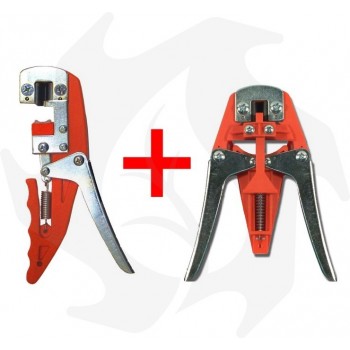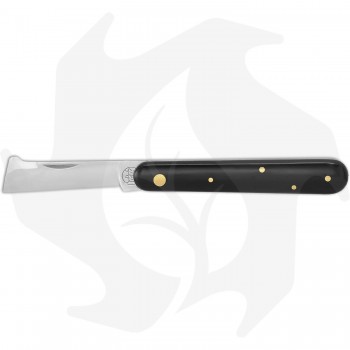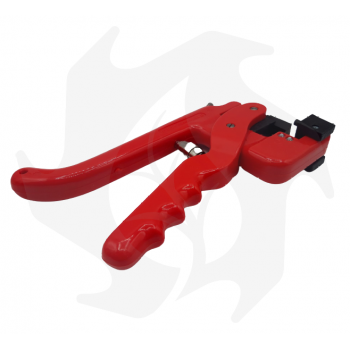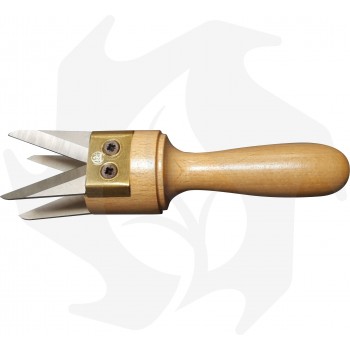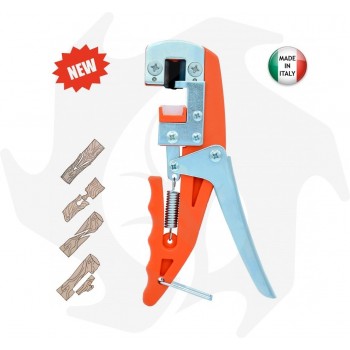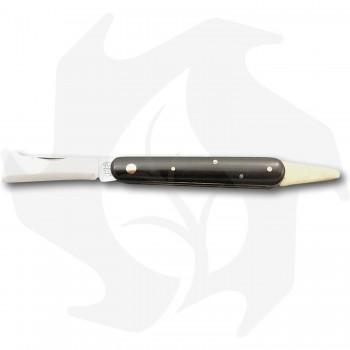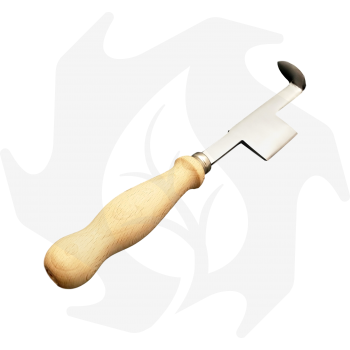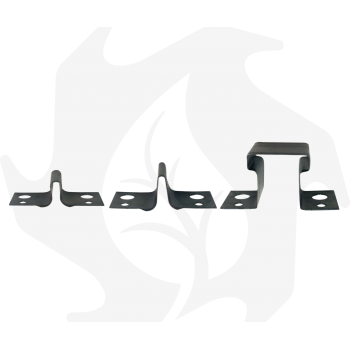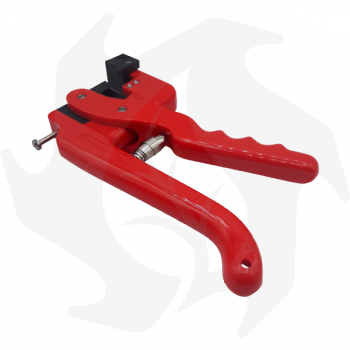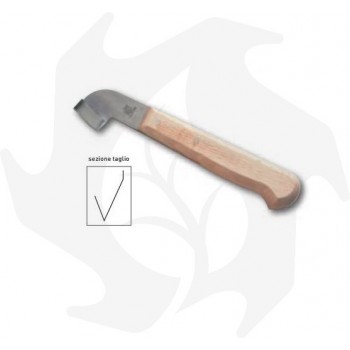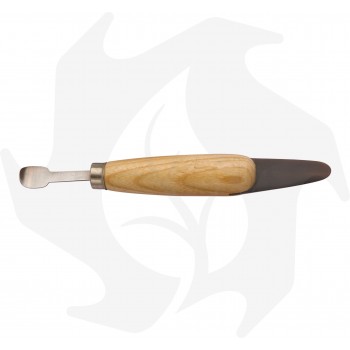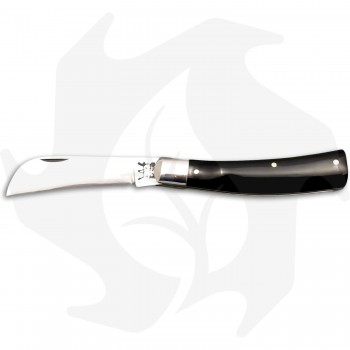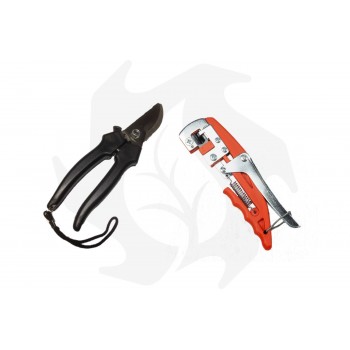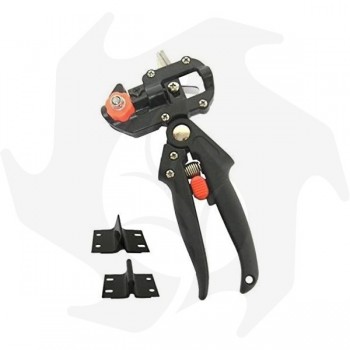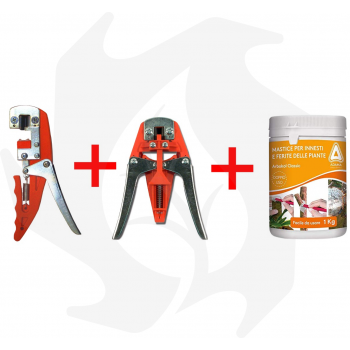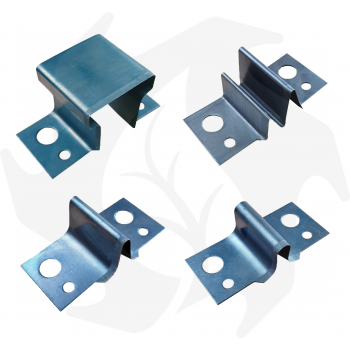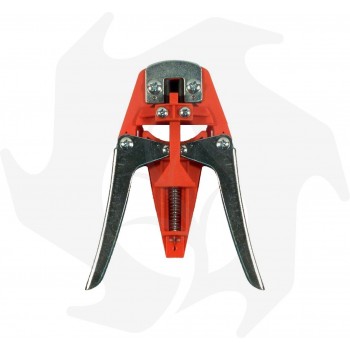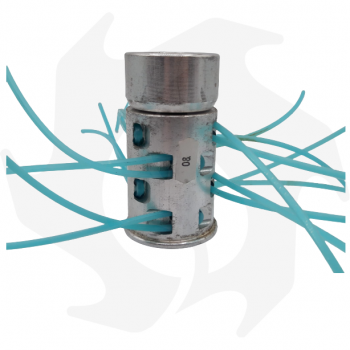4T Manual Grafting Kit + Complementary Grafting Machine
Reference: Kit4tComp
4T Manual Grafting Kit + Complementary Grafting Machine
Free shipping

Made safe
Manual Grafting Kit + Complementary Grafting Machine
The 4T Manual Grafting Tool is a pliers capable of performing 4 types of grafting: Interlocking grafting, English Double-Split grafting (NEW LAMA), Omega graft and Gemma graft. With a single grafting machine we can create all 4 cutting models as it has interchangeable blades, simply by unscrewing the two screws on the head you can mount the desired blade. There are 4 types of grafting to be able to meet the various needs of the plants which respond differently when they are cut, so you can operate on fruit trees, vines, kiwis, flowers etc...
SNAP-ON CONNECTION
The interlocking coupling is among the oldest and still widely used today. It can be practiced during the entire period of vegetative rest of the plants but the best results are obtained by carrying out the grafting at the beginning of the rest (October-November) or, better yet, before the spring recovery phase (February). In this way we overcome the danger of winter cold which significantly limits the chances of rooting.
ENGLISH DOUBLE SPLIT GRAFT
The English Double Split graft is a type of graft born in viticulture but which has then also spread to fruit growing and is suitable for all tree species. It has a high rooting percentage and minimizes marks and wounds between the rootstock and the scion. This large contact surface is the reason for the high success rate of this type of graft. The difference between simple English cleft and double English cleft lies in the presence or absence of the intermediate cut which has a mechanical function. This cut creates a joint that blocks the scion so that it does not move. It is practiced on young plants that have a diameter between 0.5 and 1.5 cm. The diameter of the rootstock and the scion must be as close as possible so as to make the cambial areas match completely.
OMEGA CONNECTION
The Omega graft is particularly used in vines and rose plants which, once cut, have a notable release of sap. To encourage the engraftment of bionts, we proceed with the Omega Graft which creates an eyelet-shaped cut that allows the flow of lymph to be regulated and allows for good healing in the future. This type of grafting is particularly recommended at the beginning of the plants' vegetative rest (October-November) but it can also be practiced in the spring recovery phase (February).
BUDDING GRAFTING
Grafts on plants include eye or shield grafts or bud grafts in the strict sense, patch grafts, whistle grafts, double shield grafts, Majorcan grafts or "Chip budding", i.e. all those grafts in which the object consists of a bud combined with a portion, more or less large in size, of bark, with or without wood underneath it. The time for this type of grafting can be either spring or the end of summer and is therefore divided into vegetating bud grafting and dormant bud grafting. A vegetating bud graft is defined as one in which the bud, as soon as it has taken root, sprouts and vegetates throughout the summer period, while a dormant bud graft is one in which the bud takes root and bonds to the rootstock before winter, but budding occurs. only in the following spring.
HOW TO USE:
To carry out the grafting, the procedure is very simple: make a cut on the mother plant obtaining a male and a female, eliminate the male. Take the scion and make a cut as before but this time the female of the two parts is thrown away. All that remains is to now join the male and female thus obtained by making the two barks fit together well. It is important that the female is always present on the mother plant because it is the plant that welcomes and that this is never smaller than the scion but larger or of the same size. In fact, even if the scion is smaller than the mother plant, it is sufficient to match the two parts on one side only so that the barks are aligned as the cambial part (i.e. where the exchange of sap takes place) remains exactly under the bark itself. The last trick is to choose a scion of about 12 cm and check that it has at least 2/3 buds. It is also good to remember that, although the cut is very precise, the graft thus obtained must always be tied and finished because what we have done is still an open wound on the plant that must be healed. To do this there are a multitude of products on the market from paraffin to mastic to beeswax for healing, raffia and ribbons for binding.
Thanks to this pliers it is possible to carry out grafts even on small plants or on young branches with great precision, it is not necessary to cut the entire plant with the advantage of being able to save it in case the graft fails.
The pliers are very resistant as they have a steel core and a glass-filled nylon body. The only thing that wears out over time is the blade which, being interchangeable, can be purchased subsequent to the basic purchase.
COMPLEMENTARY MANUAL GRAFTING MACHINE
The Complementary Grafting Machine allows you to perform crown grafting on plants up to 45mm in diameter.
Both grafting machines use the same cutting blades so you will have quick and safe grafting.
The grafting multiplication technique is used when you want to create a new plant made up of two different species.
One might think that plants of the same family are always compatible with each other and can be grafted with complete peace of mind.
This does not always happen and sometimes it can even happen that different plants can be grafted with complete ease.
The lower part of the graft is called the rootstock (the host trunk section), while the upper part is called the nest.
The nest will be the new plant, the one that grows and develops and will bring new flowers and/or fruits.
Depending on the technique used, the graft can be performed using a simple bud or a twig equipped with one or more buds. In this way it is possible to create the following types of graft:
Bud grafting
Buds from one-year-old branches are used and if it is practiced in spring, it is called "vegetating bud grafting", practiced in August it will be called "dormant bud grafting".
Bud grafts are divided into: patch grafts, or patch grafts, or plug grafts when a small rectangle is removed from the rootstock (on the side of the trunk) onto which the appropriately shaped bud will be perfectly coupled; with a whistle or ring when an entire ring of bark is removed from the rootstock on which a cylinder with the bud will be superimposed.
Scion grafting
A branch with various buds is used and the grafting will preferably be carried out in the spring period.
Scion grafting involves the following techniques: common split with which 2 or 4 pieces of branch are inserted; terminal split when the two branches are grafted at their ends so that one becomes the continuation of the other; spur when you intend to graft the branch directly onto the main trunk; on horseback when the graft is similar to the common split but the split is made on the graft.
Snap-in connection
It is a type of graft in which the branch bearing the buds fits into a cavity in the rootstock.
Crown graft
It consists of inserting the graft between the bark, cut longitudinally, and the trunk of the rootstock.
This method is divided into 2 different techniques: pen: the twig is cut obliquely as if it were one of those ancient wooden pens and subsequently inserted into contact with the trunk and "covered" with the bark; pike beak or clarinet beak: the difference from the previous method is that the bark is cut in two close and parallel points longitudinally.
Grafting by approximation It is carried out by removing a section of bark from both branches and then bringing them closer and putting them in contact.
It is used to join two branches of the same plant.
Over 90% of the products you will find on our site are ready for delivery or in any case directly present in our warehouses. If it is not present you will be notified with the delivery times so you know exactly when you will receive it.
Absolutely yes. Simply enter your VAT number in the appropriate field or indicate all the data in the notes. We remind you that in the case of a purchase that has already occurred, you have up to 7 days to request a tax invoice, providing the data via the contact form that you can find below.
Do you have further questions? Write to us!
Specific References
16 other products in the same category:
Customers who bought this product also bought:
Universal mulching head for...
Universal mulching head for multi-line brush cutters





